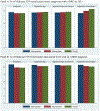Rural-urban differences in diagnostic incidence and prevalence of Alzheimer's disease and related dementias
- PMID: 33663019
- PMCID: PMC8277695
- DOI: 10.1002/alz.12285
Rural-urban differences in diagnostic incidence and prevalence of Alzheimer's disease and related dementias
Abstract
Introduction: Understanding rural-urban variation in the diagnostic incidence and prevalence of Alzheimer's disease and related dementias (ADRD) will inform policies to improve timely diagnosis and access to supportive services for older adults in rural communities.
Methods: Using 2008 to 2015 national claims data for fee-for-service Medicare beneficiaries (roughly 170 million person-years), we computed unadjusted and adjusted diagnostic incidence and prevalence estimates for ADRD in metropolitan, micropolitan, and rural counties, and examined differences in survival rates.
Results: Risk-adjusted ADRD diagnostic incidence was higher in rural versus metropolitan counties despite lower prevalence. Among beneficiaries diagnosed with ADRD in 2008, metropolitan county residents experienced longer survival compared to residents in rural and micropolitan counties.
Discussion: These data suggest that older adults in rural communities may be underdiagnosed with ADRD, and/or diagnosed at later stages of dementia. Further work is needed to develop strategies to reduce this disparity.
Keywords: ADRD; diagnostic incidence; diagnostic prevalence; rural-urban disparity.
© 2021 the Alzheimer's Association.
Conflict of interest statement
CONFLICT OF INTEREST
The authors declare there are no conflicts of interest or financial disclosures.
Figures








References
-
- Meit M, Knudson A, Gilbert T, et al. The 2014 Update of the Rural-Urban Chartbook. Rural Health Reform Policy Research Center; 2014.
-
- Norton S, Matthews FE, Barnes DE, Yaffe K, Brayne C. Potential for primary prevention of Alzheimer’s disease: an analysis of population-based data. Lancet Neurol. 2014;13(8):788–794. - PubMed
-
- Levin B Assessing Rural Health Disparities. Delmarva Foundation for Medical Care; 2014.
Publication types
MeSH terms
Grants and funding
LinkOut - more resources
Full Text Sources
Other Literature Sources
Medical

